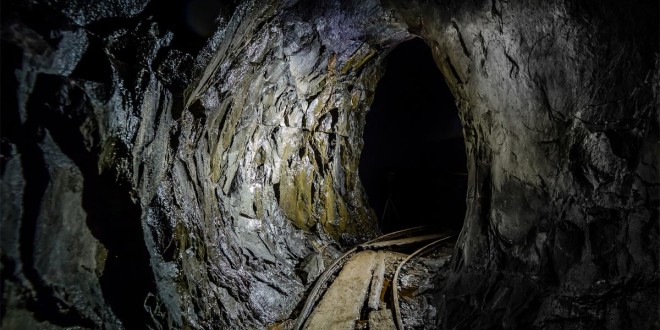“Mining is the backbone of wealth and the spinal column of all certainty.”
– Cecil John Rhodes
Silver, like gold, platinum, and palladium is considered one of the precious metals. This differentiates it from zinc, copper, lead, nickel and tin which are base metals. What makes a precious metal “precious”? The answer is not all that obvious. Scarcity, in response to demand is an important factor. The metal osmium is considered rare, but too rare to be “precious”, because there is little demand for it, and most people in fact don’t know what it is. So rarity can’t be the deciding factor. All precious metals play some role in industry, so silver can’t be denied precious metal status because it is used in photography. Silver has always been important as jewellery – but so are copper bracelets popular. I suppose the answer is bound up in history and culture. There is however no doubt that silver will be considered precious for many years to come.
Further ruminations on the silver:gold ratio
Today, silver sits at about $4.14 US per ounce and gold at $275 US per ounce. The ratio in price between gold and silver is approximately 66:1, near an all-time historic low for silver. But is silver truly undervalued?
The eminent trader Paul Sarnoff once said that when the ratio of silver to gold goes above 34:1, gold is too expensive, in relation to silver. If the ratio drops below 27:1 then silver is too expensive in relation to gold. He said that if silver looks cheap it might be worthwhile to sell some gold holdings to potentially capitalize on higher silver prices. A better course in my opinion would be to simply buy some silver if it looks cheap and sell some non-precious metal equities. But every analyst has his own opinion!
Geology of Silver Deposits:
This is a BIG topic, and to do it justice is well beyond the scope of this essay. However, there are some extremely important points here every potential silver investor should be aware of, that should both figure into your choice of investment, and define the future outlook for silver.
There are three different categories of silver deposit: stand alone, co-product, and by-product, and this is a consequence of geology and mineralogy. Unlike gold or platinum deposits, there is no such thing as alluvial or “placer” silver, because in oxidized stream and river waters silver reacts and dissolves away. Silver does naturally occur as the native metal, but it isn’t common. Famous historical occurrences for native silver are Konigsberg in Norway and Freiburg in Germany, where it was mined in medieval times.
Most high grade silver-rich deposits contain a combination of native silver, and silver sulphosalts like argentite, or proustite. These deposits are often polymetallic – meaning containing several metals – and may contain silver along with lead (in galena), zinc (in sphalerite) or copper (in chalcopyrite). Depending on how intimately intergrown these minerals are, it may or may not be possible to extract silver without the base metal component. The rich deposits of the New World worked by the Colonial Spanish in the 16th and 17th centuries had been weathered near surface, which naturally leached out or segregated the base metal components, and naturally enhanced the silver grade.
The third mineralogically important source of silver is lead sulphide (galena) itself, in which silver can occur in solid-solution. Silver doesn’t form a separate mineral you can see – even with the most powerful microscope – it is bound up in the atomic lattice of the mineral. For the rockhounds reading this, galena which contains a lot of silver has distinctive curved cleavage faces. In the former British Empire, silver-rich galena from as far away as Australia was shipped as ballast, to end up at smelters in Swansea, Wales. The smelting process separated out the silver. In most cases, silver credits paid the freight.
Most galena from which silver was recovered in the smelting process came from very coarse ores, which were “hand cobbed” or sorted by hand to remove zinc (sphalerite). In the 19th century there were few uses for zinc and the ore was difficult to smelt, consequently mixed ores where galena and sphalerite were fine-grained and intergrown were unworkable. The Great Laxey Mine, which was the second largest mine in Europe and supplied most of Britain’s domestic silver in the 18th century contained coarse galena ore. The hand-cobbed, sacked ore contained 180 oz/ton (6,170 g/t) Ag. Similarly, the Rammelsberg Mine, Europe’s largest, which operated for over a millennium, from 968 to1988, contained abundant zones of silver-rich coarse galena ore.
The advent of froth flotation technology in 1910 changed mining completely. Flotation technology is a rather elegant technique that uses surface tension in liquid to separate metals. It works like this: when bubbles are blown through a vat of chemical reagent in which there are suspended particles of powdered, ground up metal ore, certain metals will have an affinity to the liquid and will end up on the surface of the bubbles. The bubbles floating on the surface of the vats with their thin coating of metal sulphides can be skimmed off, and the mineral “concentrate” dried and then further processed. This major innovation allowed for separation of fine grained rock particles from ore, and separation of different minerals, like galena from sphalerite. It also meant that huge tonnage porphyry copper deposits and massive sulphide deposits were now workable. This had new and far reaching ramifications for silver supply.
Stand-alone:
The very big historic silver deposits like Potosi in Bolivia (the world’s largest, operated 1545 to present), Fresnillo in Mexico (1553 to present), Cobalt in Canada (1903-1988), and the Comstock Lode in Nevada (1859-1890) are examples of “stand-alone” deposits – meaning that silver was produced exclusively, or that other metals produced were relatively minor and did not add very substantially to revenue (unless that metal were gold, but the present high gold:silver price ratio is a relatively recent phenomenon). These deposits were typically rich in either the native silver metal itself or easily smelted silver-sulphosalts and sulpharsenides. As examples of how amazingly rich these deposits were, an orebody at Comstock known as Big Bonanza produced 45 million oz. of silver and 2.5 million oz of gold. At current prices, the single stope containing this ore was worth a whopping $872,450,000 US – by far the richest oreshoot ever found in the USA [note interestingly: an 18:1 mine ratio silver to gold]. Potosi has produced between 1 and 2 billion ounces of silver, and for its first 25 years of production averaged ore of 7,000 oz/ton Ag (240,000 g/t or roughly 24% by weight). Cobalt produced about 0.5 billion ounces of silver, from ore that ran as high as 14,800 oz/ton Ag (507,400 g/t !!) . Fresnillo produced 10,167 metric tonnes of silver up to 1984, (I don’t have more recent data). Though some of these deposits still operate, the high grade is now long gone. The only recent discovery of very high grade silver has been Eskay Creek, now owned by Homestake and soon to be part of Barrick. When it began production it had reserves of 1.08 Mt @ 65.5 g/t Au, 2,930 g/t Ag, 5.7% Zn, 0.77% Cu, 2.89% Pb and a geological resource of 4.3 Mt @ 28.8g/t Au, 1,027 g/t Ag. Grades as high as 5,000 g/t silver have been mined.
A further point about these deposits is that they typically contain naturally high concentrations of elements such as arsenic, antimony, selenium and bismuth, and were worked in the old days with stamp mills and mercury. The primary ores often contained significant mercury themselves. In the case of Comstock and Cobalt, this element association has unfortunately led to poisoning of water and soil by old degraded tailings. Revival of these high grade camps through renewed exploration would be difficult in these environmentally conscious times. Exploitation of Eskay Creek was touch-and-go for awhile due to high levels of mercury, arsenic, and antimony in the ores. The British Columbia government didn’t want the ore processed in the province. It was taken on by Homestake, who had experience dealing with deleterious metals at their namesake mine in South Dakota. A small point to consider is that refineries and smelters usually charge a penalty on arsenic-bearing silver, because it requires extra effort to process.
Silver-gold “epithermal” (shallow, often volcanic related) vein systems in which silver is the predominant metal, have historically been attractive exploration targets that have unfortunately fallen out of favour in the last decade, due to weakened silver prices. This class of deposit contains negligible base metals, and so has not been “cushioned” from weak precious metal prices by base metal revenues. Many North American examples are in mature mining districts largely worked out and yielding few new discoveries. There is great potential for new deposits in Peru, Argentina, and Mexico, however weak silver prices have so far led to postponement of most new mining operations. As examples of US stand-alone deposits, the DeLamar silver mine in Idaho which was operated by Kinross contained 11 million tons grading 1.8 oz/t Ag (62 g/t) and 0.023 oz/t Au (0.79 g/t), and produced 1.6 mil oz of Ag (50 metric tonnes) and 29,000 oz of gold annually. In its last year of operation (it close in 1998) it produced almost 40 metric tonnes of silver. Candelaria in Nevada historically yielded 68 million oz (2,115 tonnes) of silver, from ore grading between 120 g/t and 140 g/t Ag. It closed in January, 1999.
A final point before we leave stand-alone deposits, is that they typically occur in narrow veins which were mined in narrow-stope underground operations. Occasionally these types of deposits blow out into wide veins or breccia zones, but as a rule they are narrow and were therefore “ratholed” by the old timers. Sometimes such targets can be open pit mined but this is not typical. Modern narrow width underground mining with conventional mining equipment is expensive and labour intensive, and the ore has to be of high dollar value per tonne to support conventional mechanized mining techniques as well as unavoidable dilution of the ore by barren wallrock.
Co-product:
This second type includes polymetallic vein deposits such as those in the Coeur d’Alene camp (some of which could also be termed stand alone), volcanogenic massive sulphides (VMS) sedimentary exhalative (SEDEX) deposits, red bed copper-silver deposits (Kupferschiefer and Keweenaw type) and Mississippi Valley type (MVT) deposits.
All these deposits contain significant amounts of silver, and indeed silver may be the commodity of greatest value produced. Because the silver occurs with other metals it cannot be physically produced by itself – it is bound up in the rock with the other minerals. Also, in most of these mines silver would not be economic even if it could be somehow produced just by itself – it forms an important part of the revenue stream, but revenue from perhaps silver, copper, lead and zinc together is necessary for a viable operation. It is very important to appreciate this. The breakdown in value for a particular ton of ore will obviously change day-to-day, as metal prices fluctuate, and a serious downturn in the price of one metal can make an orebody uneconomic. A consideration here is that if you want to be invested in silver you probably don’t want to buy what is primarily a base metal miner – particularly if manufacturing and industry continue to decline and consume less base metals, leading to high metal stockpiles and depressed prices. Producers will start to cut back on base metal production and silver production will fall in tandem. This appears to be exactly the situation we currently have. The current trend towards lower base metal prices (particularly copper and zinc) will have very real impact on the supplies of newly-mined silver.
Let’s take a closer look at this, and evaluate four base metal deposits, all famous for their silver production, as if they were intact and newly found. What would they be worth in the ground?
4 lead zinc deposits with substantial silver credits: Cannington, (Qld., Australia); Red Dog, (Alaska, USA, global 2000 reserve); Broken Hill, (NSW, Australia, size includes all reserves since start of mining in 1883); and the Sullivan, (BC, Canada, just closed last month after 92 years).
| Size | Silver Grade | Lead Grade | Zinc Grade | |
|---|---|---|---|---|
| Cannington | 47.3 Mt | 493 g/t | 10.9% | 4.3% |
| Red Dog | 143 Mt | 83 g/t | 4.3% | 16.1% |
| Broken Hill | 280 Mt | 148 g/t | 10.0% | 8.5% |
| Sullivan | 172 Mt | 58 g/t | 5.8% | 5.5% |
At present prices (November 30, 2001), the percentage in value terms per tonne of ore, looks like this:
| Current value of a tonne | Ag | Pb | Zn | |
|---|---|---|---|---|
| Cannington | $152.25 US | 43% | 35% | 22% |
| Red Dog | $155.09 US | 7% | 14% | 79% |
| Broken Hill | $133.92 US | 15% | 37% | 48% |
| Sullivan | $78.31 US | 10% | 36% | 54% |
If we look specifically at Cannington, which is the world’s largest producer of silver presently, we see some interesting facts. Today, November 30th, the breakdown in values is: 43% Ag, 22% Zn, and 35% Pb, and the value of a tonne of ore is $152.25 US. A year ago, December 1st, 2000: 44% Ag, 26% Zn, and 30% Pb, and a tonne was worth $170.47. Two years ago, December 1st, 1999, the breakdown was 44% Ag, 27% Zn, and 29% Pb and a tonne was worth $185.46. No wonder that a recent Bloomberg article stated that BHP-Billiton may be putting Cannington on the block. We see the proportional value of zinc declining and the lead increasing, with silver pretty much staying constant. The price of zinc has really taken a whupping, from 53.0 cents US./lb. two years ago to 34.6 cents US./lb. now. Red Dog, a huge silver producer, which mines 16.1% Zn ore and according to our analysis, has 79% of its in-the-ground value in zinc has also seen a precipitous drop in value of a tonne of ore. Our look has been a bit simplistic though because we have assumed 100% recoveries, and to be fair, mine managers usually have the option to shift production to a site in the mine that gives the highest dollar yield per tonne, because the grades aren’t uniform. According to the Teck-Cominco website, in 2000, zinc recovery at Red Dog averaged 83%, lead recovery 58%, and silver recovery 66%. No mine recovers 100% of the contained metals, though they can modify the production circuit to marginally tweak one upwards, usually at the expense of others. This would mean, with these numbers, that the value of a tonne of ore, taking recoveries into account, is even less than we thought, and, in the case of Red Dog, the commodity that has taken the greatest pounding, zinc, actually has the best mill recoveries.
It’s not a surprise with falling zinc prices to see Pb/Zn mines cutting back on production or closing altogether. Pasminco, a lead-zinc producer which claims on its website to be the world’s third largest silver producer, operates the last mine in the Broken Hill camp – the North Broken Hill Mine. The company has recently gone into bankruptcy and attempts to find a buyer for the assets have so far not succeeded. Nanisivik, the huge Pb/Zn mine in Arctic Canada has announced it’s closing, just a few days ago.
It may come as a surprise that the Polish company, KGHM Polska Miedz was the world’s 3rd largest silver producer in 2000, according to the Silver Institute. Production came from the Kupferschiefer shale in the Lubin district. There, 4 mining operations produce 400,000 metric tonnes of copper, 12,000 tonnes of lead, 1,000 tonnes of silver and minor other metals annually, from orebodies grading 2% Cu, 40 g/t Ag, 0.2% Zn and 0.1% Pb.
The Greens Creek Mine in Alaska, owned by Kennecott, is a volcanogenic massive sulphide deposit, unusually silver rich. It produced 12,424,093 oz (386.4 metric tonnes) of silver in 2000, from ore grading 823 g/t Ag, 14% Zn, 6% Pb and 6.9 g/t Au.
Finally, for sake of completeness, though you are probably suffering from statistic fatigue by now, Falconbridge’s Kidd Creek Mine in Canada, the world’s largest volcanogenic massive sulphide deposit is probably today Canada’s largest producer of silver and contains total past production and reserves of 138.5 Mt @ 2.4% Cu, 6.5% Zn, 0.23% Pb, 90 g/t Ag and 0.15% Sn.
By-product:
Silver is a small component of nickel sulphide and porphyry copper ores. In these, silver grade may be as low as only a few grams per tonne. Inco in Canada is a significant by-product silver producer.
Porphyry copper orebodies can be mined at very low grades due to economies of scale. They are primary copper producers and most of them also produce by-product silver. Because of the huge tonnage throughput of mining operations, significant amounts of silver come from very low silver grades. For instance, the Bingham Canyon copper mine in Utah, in 1994 had head grades of only 0.63% Cu, but produced a whopping 310,100 tonnes of copper, 15.86 tonnes of gold, 8,700 tonnes of molybdenum and 135 tonnes of silver that year.
Declining base metals smelter capacity and mine production:
Weak copper prices have forced the mothballing or closure of many copper porphyry mines. BHP-Billiton has placed three of its porphyry copper mines; Pinto, Robinson, and San Manuel, on a care and maintenance basis.
It was reported in the December 1st, National Post that base metals producer Noranda will shut its Murdochville smelter in April 2002, reducing their overall copper smelting capacity by 15%. Refinery production at their Montreal facility will also be cut. Noranda ceased mining at Gaspé Copper in 1999. ASARCO, another major North American producer, will cut copper ore production by 23% at its Mission Mine in Arizona and production at its Amarillo refinery. Phelps-Dodge Corp., the world’s second largest copper producer will reduce annual output by 220,000 tons, or 16%, next year. BHP Billiton is cutting production by 170,000 tons a year and Rio Tinto PLC which owns Kennecott, is closing a copper concentrate plant in Utah permanently. Many of these smelters also purchase concentrate from other operations. Declines in smelter capacity will mean declines in copper (and silver by-product) production.
Copper on November 7th, fell to 59.8 US cents per pound. Its lowest price since October, 1987.
What these closures and cutbacks are saying is that by-product silver from these operations will tend toward “no product”. By-product silver production, which cumulatively is a very important factor in total world production, is in serious decline. This is bullish for silver.
Key:
- Ag – silver
- Au – gold
- Zn – zinc
- Pb – lead
- Cu – copper
- Sn – tin
The Chinese Wildcard:
Here’s some interesting observations, buried in a 1984 Ontario Government Mineral Policy Background paper, #20:
“Silver is Blood”
Many historians have described China as a “suction pump” for the world’s silver supply.
The passionate desire for silver in China caused them to say in their perhaps imperfect Spanish to the merchants of the fabulous Spanish Manilla galleon era, 1565-1815 AD., “plata sa sangre”, “silver is blood”. China has never had a large mine production of silver. After about 1850, Mexico-minted Spanish silver dollars became the principal currency of the Yangtze valley and the main Chinese ports.
A large proportion of the silver mined in the world in the 1910’s, 1920’s and 1930’s was exported to India and China. The average sent to those countries during the period 1910 through 1924 was 2,700 metric tonnes a year.
The former method of using silver in China is of interest. Traders carried on their business in silver dollars (Hong Kong, Maria Theresa, Mexican and other kinds), and also used lumps of silver called “sycee”, about the size and shape of a woman’s foot, bound and crippled by age long custom, now happily in large measure discarded. But the lumps were not all of the same weight or the same fineness, the latter being ascertained by the streak or mark which the lump makes on a piece of porcelain. The exchange was made by weight, and the unit of weight was the “tael”. To further complicate the transaction, the tael varied from one province to another, so that the striking of a balance was a matter for experts, which Chinese merchants doubtless were. Several efforts have been made by successive governments to substitute a more modern method but custom persists.
The People’s Republic of China may have a government stock of up to 7,800 metric tonnes of silver. However, private hoards of silver, usually coins, may be much larger. Some say that in 1980 alone some US. $120 million of old silver coins were smuggled out of China, (China was the last country to abandon the silver standard for its currency).
Obviously, the Chinese have had a love affair with silver that goes back at least 5 centuries.
What’s the situation in China, 17 years after the above was written? According to the Hong Kong Trade Development Council, domestic production of silver in 1998 was 60 times more than it had been during the 1950’s. Most of this production has come from lead-zinc-silver mines, such as Jinding, in Yunnan province, which is reported to contain over 200 Mt of ore at 7% combined Zn+Pb and 5.8 g/t Ag. Deposits such as these, though of huge tonnage, might not make it in a free market economy due to low grades. Silver has long been considered a special commodity by the government and actual production figures are state secrets. A Reuter’s report of August, 2000, quotes traders as saying production is about 1,600 metric tonnes, and demand about 1,500-1,600 tonnes, contrasted with previous yearly estimates of average annual output of 1,300 tonnes, and demand of 800 tonnes.
One of the conditions of China’s entry into the World Trade Organization is that it liberalize its gold and silver markets. In December, 1999 the newly-created Shanghai Huatong Silver Exchange was opened to limited trading, to be officially opened the following year in June. Obligatory sales by producers to the People’s Bank – the central bank of China – have now been curtailed. The silver exchange has been considered a preliminary for the long-awaited opening of the Gold Exchange later this month. Exchange prices are meant to reflect international silver market prices, and to provide a benchmark for pricing elsewhere in China. Regarded by the Chinese government as a resounding success, the silver Exchange has been a disappointment, and trading activity fell off after about 4 months, not for lack of trade, but because the government chose to slap a 17% Value Added Tax (VAT) on all trades. The government also limits exports of silver on a strict quota system. According to a March 19th, 2001 article by the Hong Kong Trade Development Council, “Tax problems have triggered ex-pit transactions and smuggling. Many member units of the market report that some individual smelters are selling silver free of tax or with a 3-4% VAT, causing chaos to transaction prices outside the market.”
The question mark that hangs over China is a widely-rumoured silver stockpile still held by the central bank. Sources from the People’s Bank are quoted as saying it took 2,900 tonnes of domestic production into inventory between 1994-1998. Industrial sources estimate that China sold 61 million oz. into world markets in 1999, or about 7% of the world’s silver supply. This represents a draw down of 1,900 tonnes. Analysts say that China would be unwilling to liquidate the remaining stocks – whatever they are – under US $5.50/oz. “We have no figures on central bank’s silver trading, as they are extremely confidential. But we cannot imagine any big amounts to be sold on world markets while domestic demand remains healthy.”
The Chinese market is a wildcard. Potentially the last large stockpile of central bank silver is held by China, and the risk that this could be liquidated has weighed heavily on silver prices since 1999. How likely is it that China would unload this silver – with current low prices – for American dollars? I would say not very. It seems likely however that much domestic production is finding its way into the private hoards of investors, much like the Spanish silver dollars of yesteryear.
Considering Investment Strategies:
The world has witnessed incredible shifts in the supply of silver, from mostly stand-alone or primary silver producers a hundred years ago, to almost exclusively mines that produce silver along with base metals today. Due to weak copper and zinc prices, all of these operations have become less profitable, and for some, unviable, in recent years or months. The base metals industry is cutting capacity due to large metal inventory overhangs. Because of the co-product or by-product relationship of silver, we should see sharp declines in world silver production. Statistics are hard to come by because the situation is incredibly fluid, with new announcements of base metal production cutbacks almost every week.
In such a situation, should China refrain from unloading its (phantom?) stockpile, we could see increases in silver prices due to shortage of supply. Silver plays an essential and irreplaceable role in many industrial applications, in much the same way as there are few alternatives for palladium in catalytic converters.
A concurrent surge in investment demand and decline in production has the capability to severely squeeze silver inventories. If one were interested in maximizing exposure to potential increases in the silver price – and minimize your risk to further base metal declines – the prudent course is to bypass projects which are nominally silver producers, but are in fact large tonnage base metal operations. No one will mine these deposits purely for the silver they contain, should base metals continue their downward trend. They will be mothballed until better base metal prices return. These projects should be avoided even if the global silver resource figures appear enticing.
A smaller percentage of worldwide silver production comes from stand-alone or primary silver producers. These may become attractive investments in the near future. It’s important to critically evaluate whether the value of the ore really resides in the silver. At least a few base metal deposits are being shopped around today as “silver deposits”. Also, critically evaluate how sensitive these operations are to lower base metal prices. Perhaps the safest option is to invest in companies with producing or drilled out epithermal gold-silver deposits, where silver is the predominant metal and base metals are minor or absent. Silver-rich precious metal epithermal deposits have not been widely considered attractive exploration targets for a number of years; the junior mining scene being led away in recent years by the Pied Piper of platinum-palladium. Silver-rich epithermals however will become extremely important when gold and silver take off. They potentially offer the biggest bang for your buck.
As the metals inevitably cycle through trends it looks like silver-rich deposits could be the next rising star.
*****
Straight Talk on Mining is provided for information purposes only. Nothing herein is to be construed as a recommendation to buy or to sell any particular security or financial instrument. Nothing herein is to be construed as a recommendation to engage in any particular investment strategy or trading strategy.
The investments discussed herein may be unsuitable for investors depending on their specific investment objectives, financial situation, and risk tolerance. Private investors should obtain the advice of a qualified financial advisor before entering into any transaction.
Straight Talk on Mining is based on information that is generally available to the public. The sources used are believed to be reliable, but because the information and data that they provide are beyond our control, no representation is made that it is complete or accurate. Staff of Straight Talk on Mining may or may not be invested in the equities mentioned.
References to other publications and direct links to external Internet sites are sometimes given. The inclusion of any publication, organization or Internet site herein does not imply any endorsement. Straight Talk on Mining has no control over the content of any Internet site that you may reach through links that are provided, nor can their truth, accuracy, or completeness be vouched for.
Straight Talk on Mining is not a financial services company nor is it affiliated with any financial service company in any jurisdiction.
The author/publisher, Dr. Keith M. Barron, is not a qualified financial advisor and is not acting as such in this publication. The accuracy of any legal term or definitions used herein should be verified with your legal advisor or the appropriate government agency.
 Straight Talk On Mining Insights on mining from economic geologist Dr. Keith Barron.
Straight Talk On Mining Insights on mining from economic geologist Dr. Keith Barron.




